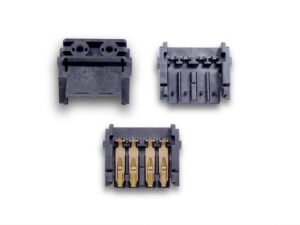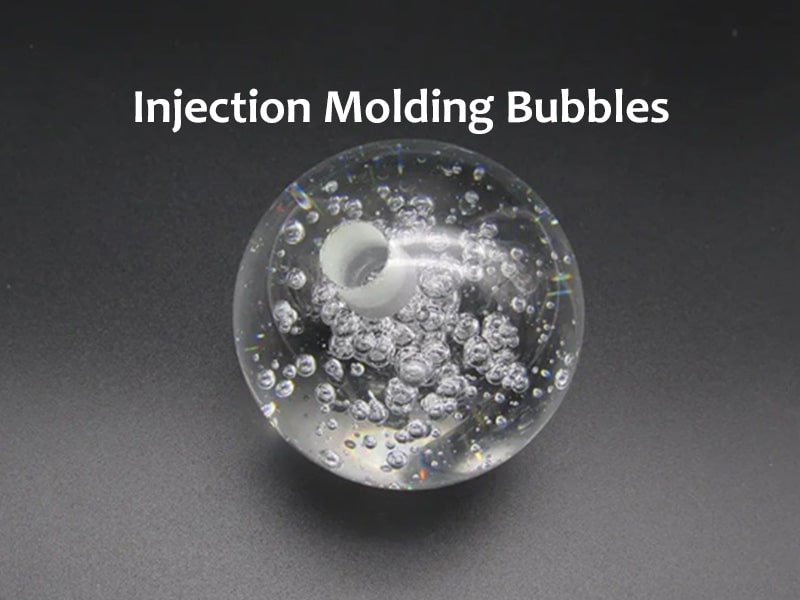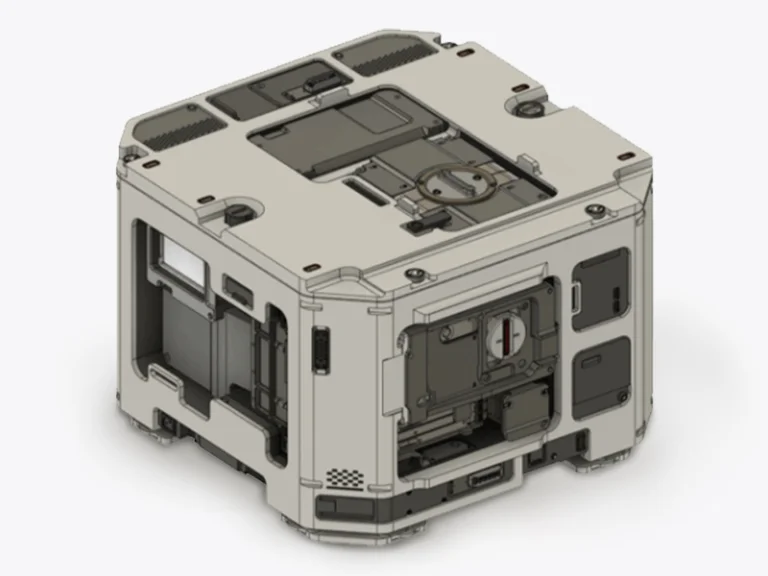Injection molding is a widely used manufacturing process, but understanding injection molding price is essential for optimizing production budgets. Various factors impact plastic injection molding costs, from tooling expenses to material selection. This guide covers key cost components, calculation methods, and strategies to minimize injection molding manufacturing costs.
Key Factors Influencing Injection Molding Cost
Equipment and Machine Costs
The type and size of an injection molding machine significantly influence production costs. High-tonnage machines are required for larger parts, while precision molding machines are needed for intricate designs, both of which increase molding costs per part.

Mold Design and Tooling Costs
- Mold complexity: Features like undercuts, thin walls, and complex geometries raise plastic mold manufacturing costs.
- Mold material: Steel molds have a higher upfront tooling cost for injection molding but offer long-term durability, while aluminum molds are more cost-effective for low-volume production.
- Cavity count: Multi-cavity molds reduce per-unit injection moulding cost by increasing output per cycle.

Raw Material Costs
- Plastic resin selection: High-performance engineering plastics (e.g., PEEK, Ultem) cost more than common thermoplastics like ABS and PP.
- Material waste: Poor material flow or excessive sprues and runners increase plastic manufacturing costs.
Production Volume and Cycle Time
- Mass production lowers the cost of plastic injection molding per unit by spreading fixed costs across a higher number of parts.
- Cycle time optimization can reduce injection molding part cost by increasing machine efficiency.
Labor and Overhead Costs
Labor-intensive post-processing, such as assembly, surface finishing, and quality control, contributes to the overall injection molding manufacturing cost.
How to Calculate
Cost of
Injection Molding?
Understanding how to calculate injection molding price requires analyzing both fixed and variable costs.
Fixed Costs
- Injection mold cost: One-time investment in mold fabrication, significantly impacting low-volume injection molding cost.
- Machine setup cost: Includes programming and initial calibration.
Variable Costs
- Material costs: Depend on resin type, colorants, and additives.
- Cycle time and production efficiency: Faster cycles lower injection molding pricing per unit.
- Labor and secondary operations: Assembly, finishing, and packaging add to final plastic injection molding cost.
Cost Impact of Production Volume
For low-volume production, prototype injection molding cost can be high due to tooling expenses, whereas large production runs significantly reduce molding cost per unit.
Cost-Saving Strategies in Injection Molding
Injection molding can be an expensive process. However, there are several strategies manufacturers can employ to get low cost injection molding without compromising part quality or performance.
Optimizing Mold Design
- Simplify part geometries to lower mold making costs.
- Use multi-cavity or family molds to improve efficiency.
- Choose aluminum molds for low-volume plastic injection molding to save on molding tooling costs.
Select Cost-Effective Materials
- Balance material properties with injection molding part cost considerations.
- Recycle and reuse plastic waste to reduce raw material expenses.
Comparison Table (Title: Injection Molding Cost by Material 2024)
| Material | Price ($/kg) | Applications | Cost-Saving Tips |
|---|---|---|---|
| PP | 1.2–1.8 | Consumer product housings | Reduce wall thickness to optimize fill rate |
| ABS | 2.0–2.5 | Electronic components | Use 10–30% recycled pellets |
| PC | 4.5–6.0 | Medical/Automotive high-strength parts | Avoid overcooling to shorten cycle time |
Reduce Cycle Time and Waste
- Optimize cooling time and runner design for better efficiency.
- Implement automation to lower labor costs in injection molding.
Use Low-Cost Manufacturing Locations
- Offshore production can reduce plastic injection molding costs, but logistics and quality control must be managed.
Cost Variations Across Different Applications
The injection molding costs can vary significantly depending on the type of product being manufactured. Different industries and applications have distinct requirements, which affect not only the materials and manufacturing techniques used but also the design complexity and tooling.
Consumer Goods
Low-cost thermoplastics like PP and ABS dominate, keeping consumer goods injection molding price low.
- Materials: Consumer goods typically use cost-effective plastics such as polypropylene or ABS, which are widely available and easy to process. These materials help lower overall injection molding cost, making the process suitable for mass production.
- Part Complexity: While many consumer goods parts have simple geometries, others may include intricate features such as snaps or inserts. Simple designs lower the injection molding price, but complex parts require more sophisticated tooling and mold design, driving up cost.
- Production Volume: High-volume production is common in the consumer goods sector, which allows for economies of scale. This reduces the cost per unit significantly, as the fixed costs of mold design and setup are spread across a larger number of parts.

Medical Devices
Strict regulatory requirements and specialty materials raise medical injection molding costs.
- Materials: Medical devices often require medical-grade plastics that meet specific regulatory standards, that tend to be more expensive than standard consumer-grade plastics.
- Part Complexity: Medical devices often require more complex geometries and tighter tolerances to ensure functionality and safety.
- Production Volume: Although some medical device manufacturers operate at high volumes, many projects involve lower-volume, specialized runs.

Automotive Parts
High-strength polymers and large molds increase automotive injection molding cost, but high production volumes offset expenses.
- Materials: Automotive parts often require high-strength plastics or composites, such as nylon, polycarbonate, and PBT. These materials offer durability and resistance to heat, chemicals, and wear but tend to be more costly than standard injection molding resins.
- Part Complexity: Automotive parts often have highly detailed and intricate designs, such as undercuts, complex geometries, and reinforcement features. The need for high precision and the incorporation of metal inserts or additional components can increase the injection molding cost.
- Production Volume: The automotive industry typically involves high-volume production, which benefits from economies of scale. However, the high precision and quality standards required for these parts can make tooling more expensive and necessitate additional inspection and testing procedures.

Electronics
Precision molding and heat-resistant plastics increase electronic component injection molding costs.
- Materials: Electronics parts require materials that are not only cost-effective but also offer high electrical insulation properties, durability, and resistance to heat and chemicals. Additionally, materials used in electronic components often need to meet specific fire-resistance or environmental regulations, which can increase the injection molding cost.
- Part Complexity: Electronic components tend to have intricate designs that require high precision, such as thin walls, small cavities, and complex internal features. This increases the complexity of the mold design and manufacturing process, leading to higher tooling and labor costs.
- Production Volume: The electronics industry is characterized by both high-volume production (e.g., mobile phone casings) and low-volume, highly customized runs (e.g., specialized connectors). For high-volume runs, the injection molding price per unit tends to decrease, but low-volume projects often involve higher cost due to the need for specialized molds and testing.

Getting an Accurate Injection Molding Costs Quote
When requesting a plastic injection molding quote, ask the following:
- What mold material do you use, and how does it affect mold tooling cost?
- Do you offer multi-cavity molds to reduce injection molding per unit cost?
- Can you provide low-cost injection molding options for prototypes?
- Do you offer secondary processes like surface finishing and assembly?
Conclusion
Understanding cost of injection molding is crucial for manufacturers aiming to optimize budgets. By considering tooling expenses, material selection, and production volume, businesses can reduce plastic injection molding costs per part while maintaining quality.




